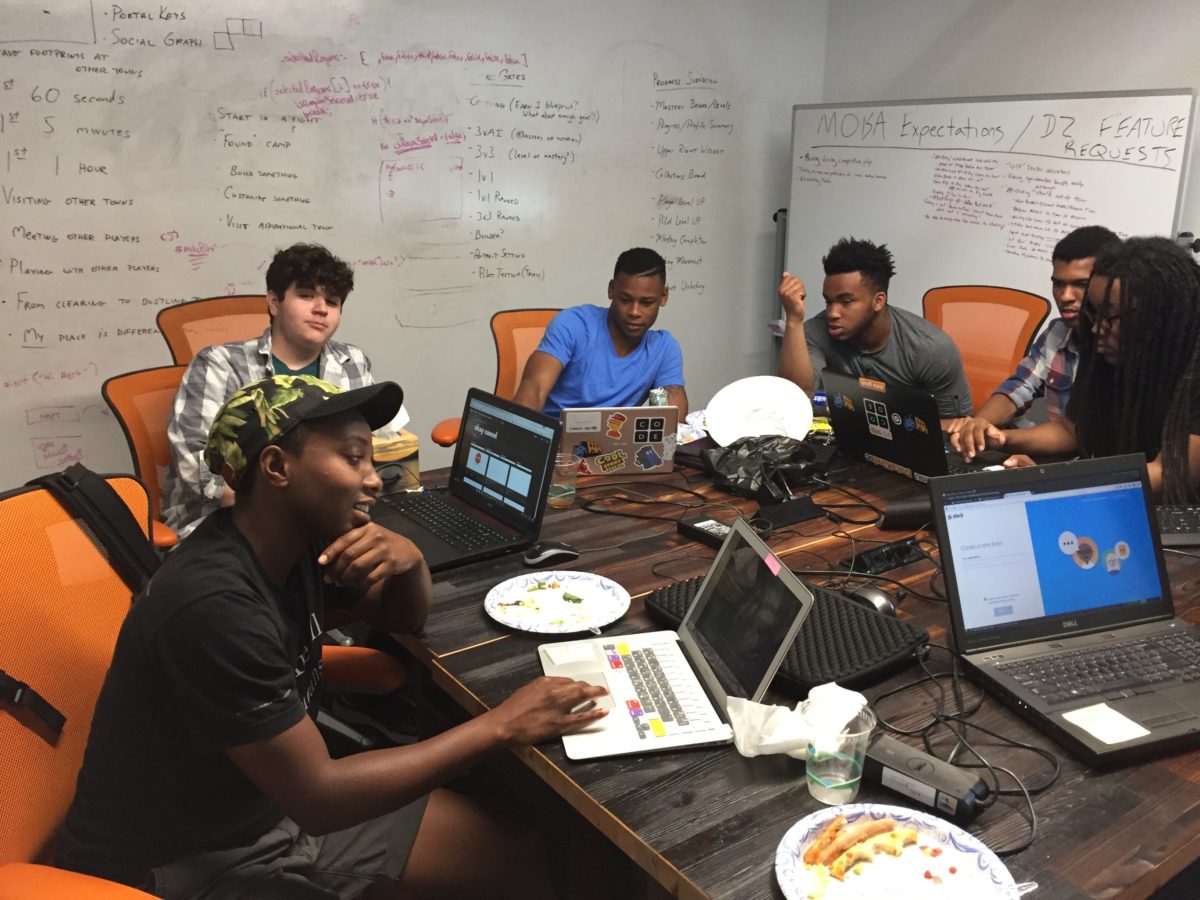Since October, a group of six teenagers have been meeting for three hours on Saturdays at Code in the Schools’ offices in Station North. They’re working on a tool that utilizes mobile phones to address one aspect of the city’s heroin crisis.
Bad Batch Alert sends text messages to alert people to a spike in overdoses in a given area.
The application amplifies data from Emergency Medical Services that gets analyzed by the Baltimore City Health Department. The application is designed to let loved ones or neighbors know when people are overdosing at a high rate in a given area, indicating the presence of a dangerous batch of heroin that could be tainted with a substance like fentanyl.
“When a direct overdose spike is detected in a neighborhood, we can send them a direct SMS message,” said Michael LeGrand, a cofounder of Code in the Schools, the computer science education nonprofit, who is leading the effort. LeGrand saw how the opioid epidemic affected people he knew personally, and wanted to contribute a solution. The approach crystallized as he talked with other technologists at a Kaiser Permanente hackathon during Baltimore Innovation Week.
Overdose spikes happen weekly. From a data perspective, the spikes are “rare enough and specific enough to your neighborhood that this will have an effect and save lives,” LeGrand said.
For users, there’s also a chance to respond and get help. For instance, texting “Van” will show the location of the needle exchange van. Another command provides access to a 24-hour crisis line.
The students worked with a stack of technology including Heroku and Twilio.
“It was the first place I’ve been able to write code that actually did something, that went into a program,” said 16-year-old Gavin Gomel-Dunn. He also said he has a deeper understanding of the opioid epidemic, which was labeled an emergency by Gov. Larry Hogan this year.
The work hasn’t all been coding. They’ve also been talking to people in the community to hear about what services are needed, and handing out cards to encourage people to sign up.
They’ve found that the most tech-centric approach isn’t necessarily the one that residents want. When residents said they would sign up if they could call in with touch-tone to sign up rather than text, they wrote a script and began recording the dialogue. the data comes from EMS and goes to health department.
As they build the app, they’ve had support from the health department. Bad Batch Alert was one of the projects in the TECHEALTH cohort, which provided a way to work with city government on solutions. The students are also now being paid for their work as a result of $4,500 in grant funding from the department.
It’s also being tested from a public health perspective. The team is working with Amanda Latimore, the Director of Social Epidemiology and Quality Improvement at Behavioral Health System Baltimore. She said it’s an “innovative approach,” and testing over the next six months will determine the effectiveness.
She pointed to one feature that allows people to text back and ask for help anonymously can also serve as a way for people who don’t feel comfortable calling 911, given that there is drug use involved.
The program could serve “as a go between so people don’t have to use their own personal cell phone to notify authorities and ask for help. The hope is that through this anonymous feature people will be more likely to ask for help,” Latimore said.







